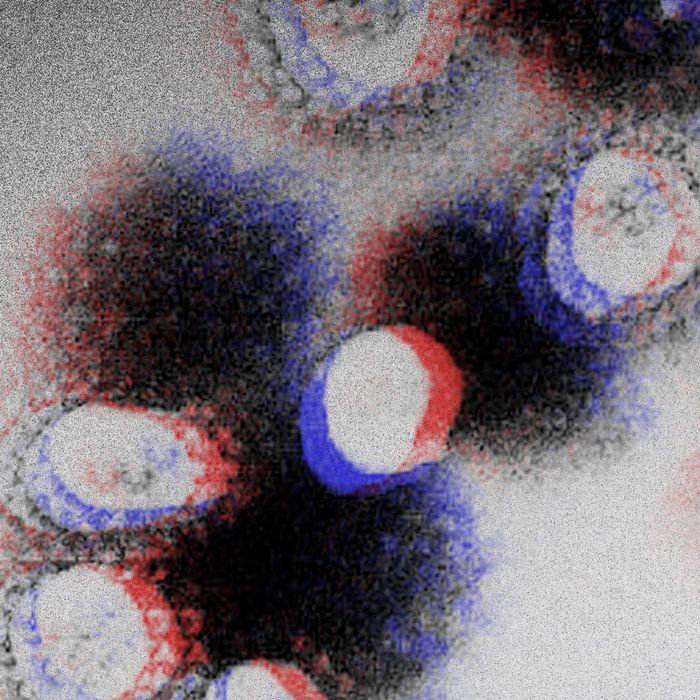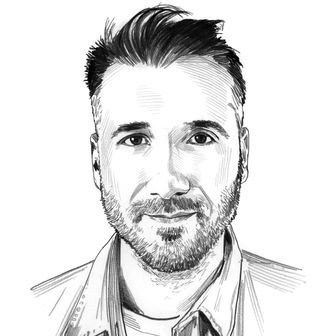
As the Omicron variant rips across the world, key questions remain about its virulence and some of the early data seems to be at odds with itself. Last week, a study out of South Africa suggested a 29 percent reduction in severe illness, which has been followed by other encouraging data. This week, a small study by Imperial College London found “no evidence” that Omicron caused less severe disease than Delta. Exactly what that means across large populations of vaccinated people remains to be seen and will soon play out in the United Kingdom, Denmark, Norway, and the United States where New York City is the worst-hit area so far. To make sense of the latest on Omicron, Intelligencer spoke to Dr. Eric Topol, a professor of molecular medicine at Scripps Research Institute and one of the most influential experts of the pandemic. Topol also criticized the Biden administration for not being bold or creative in its fight against Omicron while pushing back against the notion that people should just accept catching the variant.
What do you make of the Imperial College study that showed no evidence of less-severe disease in Omicron?
It’s a classic example of “absence of evidence is not evidence of absence.” Because it was based on 24 hospitalizations, which is a very small number, we really can’t say much about it. If you look at South Africa, the U.K., Denmark, Norway, all the places where there’s a heavy Omicron burden, it’s very clear that it’s a milder picture, a less-severe picture. The reason for that, though, has been ascribed to the virus and that’s a big mistake. The real reason it’s less severe is that we have immunity walls in each of those places, very high vaccination rates in Denmark and Norway. You know, very solid in the U.K. with boosters, and in South Africa, there was a very heavy prior-COVID burden as well as a 25 percent vaccination rate. Yes, it appears to be milder, but that’s because of the immunity wall and the fact that this has only been reported for three weeks. There’s still time for hospitalizations and deaths, there’s a lag that we have to be respectful of.
I ultimately do believe that this will have an overall milder appearance. But the problem is, if you put this virus in people who are unvaccinated, or with prior-COVID without a vaccination, or people who have waned in their vaccine, you’re going to see just as much virulence as with any other version of the virus.
There’s been a very sharp decrease in cases in Gauteng province in South Africa. What do you make of that?
That’s the pattern of every surge. It always starts to come down at some point. Look what happened with Delta in India. It makes a pass through the population and then there’s a retreat, but it’s still in the early downslope in Gauteng. It is not for the country of South Africa. Gautang was the first epicenter, and it’s encouraging that it started to descend, but that’s just one province in South Africa. We’ll see that eventually everywhere there’s Omicron. It won’t just keep going up forever, right? It’s not like “Jack and the Beanstalk.” There’s no let-up in South Africa as a country. It’s still on the O-side, vertical, 90 degrees.
What do you think so far of the Biden’s administration’s response to Omicron?
There are some things that they want to do, but they can’t. They want to get the vaccination rate much, much higher. It’s sitting at 61 percent and should be 91 percent. That isn’t their fault. They’ve tried. They can’t even get mandates for health-care workers, much less other mandates, and who would have thought we would have had to resort to mandates?
Still, of the things that they can control, there have been many shortcomings. First of all, boosters were delayed. The data showing the benefit against Delta were absolutely unequivocal. If we had gotten more people boosted earlier we’d be in a better position to handle Omicron. We knew it was an issue, and we knew we could deal with it back in August, and we never had consensus. The messaging has been really muddled and mixed. We’re finally saying everybody should go get a booster because of Omicron? No, we should have had it because of Delta, and it should have been every adult. The administration says “we’re sticking to the science.” The science says four months is the waning, not six months. We’ve got all of these people sitting out there waiting to get to six months while they’re unprotected. After four months, you pretty much need a booster, and you certainly need it against Omicron.
Another thing that’s a mistake, in my view, is getting testing and masks. In Colorado, they’re mailing everyone free rapid tests. In New York City, they’re getting people KN95 masks, which governments can buy for pennies and they’re much better masks. Rapid tests should be distributed to everyone who wants them, free. None of this billing the insurance company stuff. That’s a non-starter.
We’re not using the tools that we have. The other thing I would do is use the Defense Production Act to get more Paxlovid made, hundreds of millions of booster packs of that medicine. Ready and out there. Now. We’re going to have 200,000 treatment courses, which is not going to get us very far. That’s the first time we’ve had a workaround plan for our immune response. We’ve been totally dependent on vaccines and monoclonal antibodies. Now we have a pill that can take down the virus, which doesn’t require any immune-system response, but we aren’t getting it made at-scale. We’re depending on one company to make it and that’s going to take a while. There’s no boldness or creativity. And the virus just got so much more formidable.
In terms of containing Omicron, is there anything that can be done at this point?
The problem is that we have a Balkanized country. For example, a lot of people are going to be flying for the holidays. Why isn’t it required that everybody be fully vaccinated? By the way, fully vaccinated means three shots, unless you’re within four months of your second shot. It should have been done some time ago. We should be much tighter about who gets into airports, gets on planes, sits on runways. That would help immensely.
But that’s just one of so many strategies that we’re not implementing. It’s completely unreasonable to say mea culpa. Omicron was only reported three weeks ago. If people get Omicron infections they could pass it on to unvaccinated, immunocompromised, or elderly people. It’s rolling the dice with an unpredictable course, not just for the individual, but for that person’s network. In the individual, they could have a mild case and get long Covid and you have disabling, chronic features that go on and on.
I take it that you are not someone who is resigned to getting Omicron?
No, I do not want to get this. I do not want my patients, family, or friends to get this. I don’t want anybody to get this. The idea of having chicken pox parties with Omicron is preposterous. If we really knew that there was something about this virus that gave it very little virulence, very little potential for long-term sequela, that’s a different story. But we sure don’t know that now and I doubt that that’s going to prove to be the case.
When do you see this wave peaking in the United States?
Here in San Diego, it’s over 20 percent of all new cases and in New York City it’s probably around 20 percent. It doubles every two-to-three days, in terms of the percentage of cases that are Omicron. It’s not going to take long. I think the projections are that, in the first half of January, most of the country will be Omicron-dominant, meaning greater than 50 percent. We could have many places that will already be 90 percent.
What other Omicron characteristics should we be looking for in the coming weeks?
One of the important things will be determining whether people who were vaccinated and got Omicron clear quickly so they’re not infectious. Right now, we’ve got NFL and NBA players and students at universities in isolation. Maybe that only needs to be a couple of days? That can be determined quickly by doing formal viral load assessment, looking at copies of virus on serial days in people who are vaccinated. We should be doing those studies now so we don’t lose our health-care workforce. We can’t afford to lose health-care workers. If they get Omicron – and they will – it will knock out a lot of our workforce. But if they’re knocked out for two days instead of 10, that will make a big difference.
This interview was condensed and edited for clarity.
More on omicron
- What to Know About the New COVID Booster Shots
- The Dismantling of Hong Kong
- What We Know About All the Omicron Subvariants, Including BA.2.12.1






























